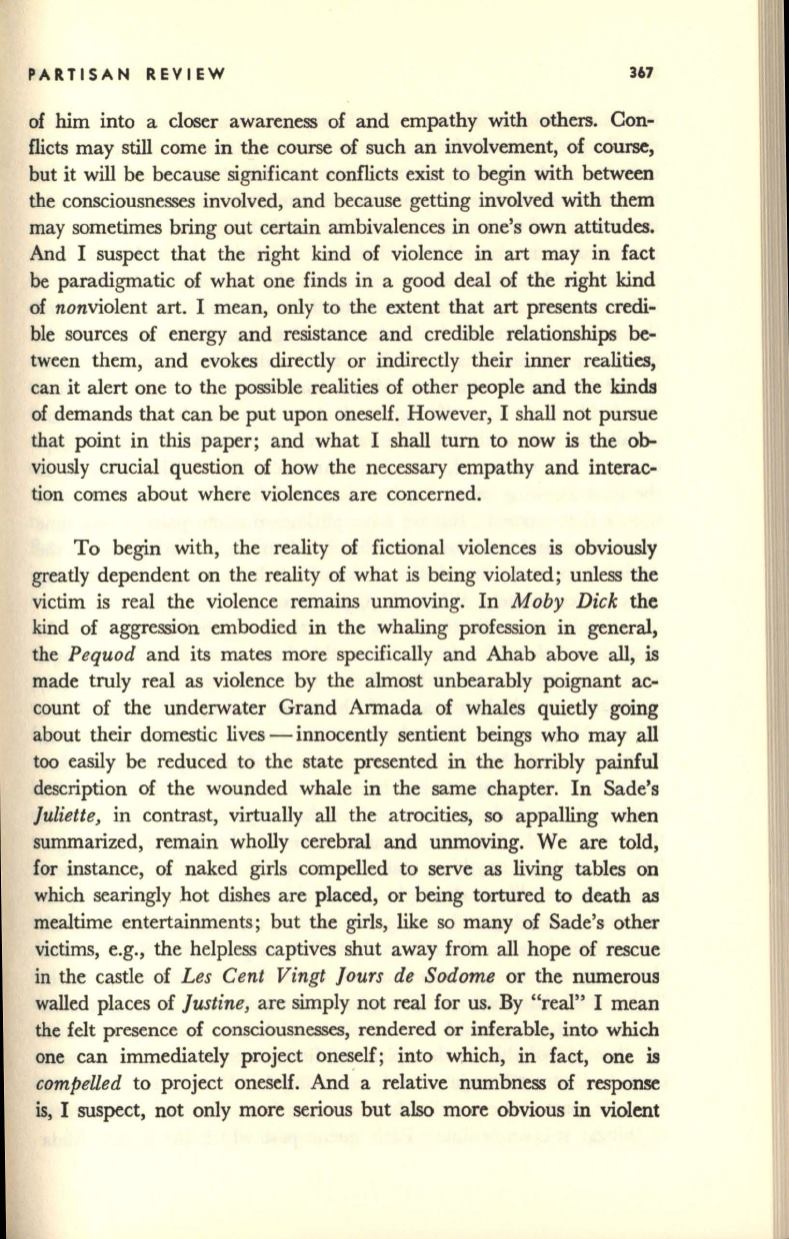
PARTISAN REVIEW
367
of
him
into a closer awareness of and empathy with others. Con–
flicts may still come in the course of such an involvement, of course,
but it will be because significant conflicts exist to begin with between
the consciousnesses involved, and because getting involved with them
may sometimes bring out certain ambivalences in one's own attitudes.
And I suspect that the right kind of violence in
art
may in fact
be
paradigmatic of what one finds in a good deal of the right kind
of nonviolent art. I mean, only to the extent that
art
presents credi–
ble sources of energy and resistance and credible relationships be–
tween them, and evokes directly or indirectly their inner realities,
can it alert one to the possible realities of other people and the
kinds
of demands that can be put upon oneself. However, I shall not pursue
that point in this paper; and what I shall turn to now is the ob–
viously crucial question of how the necessary empathy and interac–
tion comes about where violences are concerned.
To begin with, the reality of fictional violences is obviously
greatly dependent on the reality of what is being violated; unless the
victim is real the violence remains unmoving. In
Moby
Dick
the
kind of aggression embodied in the whaling profession in general,
the
Pequod
and its mates more specifically and Ahab above all,
is
made truly real as violence by the almost unbearably poignant ac–
count of the underwater Grand Armada of whales quietly going
about their domestic lives - innocently sentient beings who may .all
too easily be reduced to the state presented in the horribly painful
description of the wounded whale in the same chapter. In Sade's
Juliette,
in contrast, virtually all the atrocities, so appalling when
summarized, remain wholly cerebral and unmoving. We are told,
for instance, of naked girls compelled to serve as living tables on
which searingly hot dishes are placed, or being tortured to death as
mealtime entertainments; but the girls, like so many of Sade's other
victims, e.g., the helpless captives shut away from all hope of rescue
in the castle of
Les Cent Vingt JOUTS de Sodome
or the numerous
walled places of
Justine,
are simply not real for us. By "real" I mean
the felt presence of consciousnesses, rendered or inferable, into which
one can immediately project
on~elf;
into which, in fact, one
is
compeUed
to project oneself. And a relative numbness of response
is,
I suspect, not only more serious but also more obvious in violent


